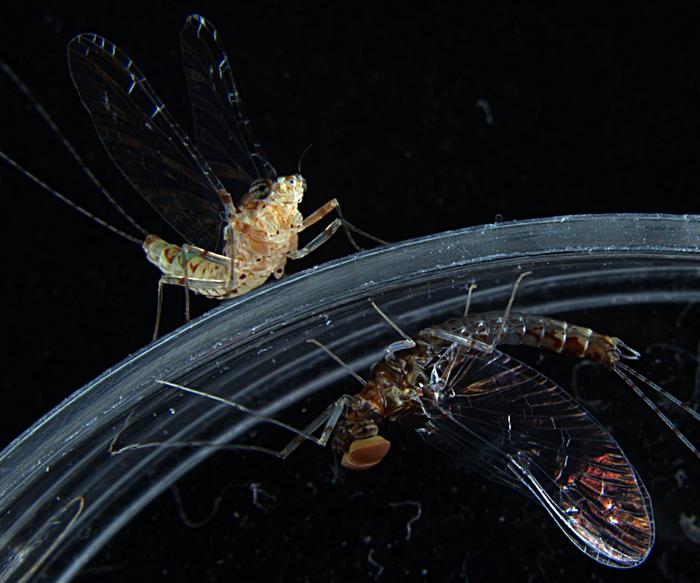700 million years ago, a remarkable creature emerged for the first time. Though it may not have been much to look at by today’s standards, the animal had a front and a back, a top and a bottom. This was a groundbreaking adaptation at the time, and one which laid down the basic body plan which most complex animals, including humans, would eventually inherit.

Credit: Isabel Almudi
700 million years ago, a remarkable creature emerged for the first time. Though it may not have been much to look at by today’s standards, the animal had a front and a back, a top and a bottom. This was a groundbreaking adaptation at the time, and one which laid down the basic body plan which most complex animals, including humans, would eventually inherit.
The inconspicuous animal resided in the ancient seas of Earth, likely crawling along the seafloor. This was the last common ancestor of bilaterians, a vast supergroup of animals including vertebrates (fish, amphibians, reptiles, birds, and mammals), and invertebrates (insects, arthropods, molluscs, worms, echinoderms and many more).
To this day, more than 7,000 groups of genes can be traced back to the last common ancestor of bilaterians, according to a study of 20 different bilaterian species including humans, sharks, mayflies, centipedes and octopuses. The findings were made by researchers at the Centre for Genomic Regulation (CRG) in Barcelona and are published today in the journal Nature Ecology and Evolution.
Remarkably, the study found that around half of these ancestral genes have since been repurposed by animals for use in specific parts of the body, particularly in the brain and reproductive tissues. The findings are surprising because ancient, conserved genes usually have fundamental, important jobs that are needed in many parts of the body.
When the researchers took a closer look, they found a series of serendipitous ‘copy paste’ errors during bilaterian evolution were to blame. For example, there was a significant moment early in the history of vertebrates. A bunch of tissue-specific genes first appeared coinciding with two whole genome duplication events. Animals could keep one copy for fundamental functions, while the second copy could be used as raw material for evolutionary innovation. Events like these, at varying degrees of scale, occurred constantly throughout the bilaterian evolutionary tree.
“Our genes are like a vast library of recipes that can be cooked up differently to create or change tissues and organs. Imagine you end up with two copies of a recipe for paella by accident. You can keep and enjoy the original recipe while evolution tweaks the extra copy so that it makes risotto instead. Now imagine the entire recipe book is copied – twice – and the possibilities it opens for evolution. The legacy of these events, which took place hundreds of millions of years ago, lives on in most complex animals today,” explains Federica Mantica, author of the paper and researcher at the Centre for Genomic Regulation (CRG) in Barcelona.
The authors of the study found many examples of new, tissue-specific functions made possible by the specialisation of these ancestral genes. For example, the TESMIN and tomb genes, which originated from the same ancestor, ended up independently playing a specialised role in the testis both in vertebrates and insects. Their importance is highlighted by the fact that problems with these genes can disrupt sperm production, affecting fertility in both mice and fruit flies.
The specialisation of ancestral genes also laid some foundations for the development of complex nervous systems. For example, in vertebrates, the researchers found genes critical for the formation of myelin sheaths around nerve cells, which are essential for fast nerve signal transmission. In humans they also identified FGF17, which is thought to play an important role in maintaining cognitive functions into old age.
In insects, specific genes became specialised in muscles and in the epidermis for cuticle formation, contributing to their ability to fly. In the skin of octopuses, other genes became specialised to perceive light stimulI, contributing to their ability to change colour, camouflage and communicate with other octopuses.
By studying the evolution of species at the tissue level, the study demonstrates that changes in the way genes are used in different parts of the body have played a big role in creating new and unique features in animals. In other words, when genes start acting in specific tissues, it can lead to the development of new physical traits or abilities, which ultimately contributes to animal evolution.
“Our work makes us rethink the roles and functions that genes play. It shows us that genes that are crucial for survival and have been preserved through millions of years can also very easily acquire new functions in evolution. It reflects evolution’s balancing act between preserving vital roles and exploring new paths,” concludes ICREA Research Professor Manuel Irimia, co-author of the paper and researcher at the Centre for Genomic Regulation.
Journal
Nature Ecology & Evolution
DOI
10.1038/s41559-024-02398-5
Method of Research
Experimental study
Subject of Research
Animals
Article Title
Evolution of tissue-specific expression of ancestral genes across vertebrates and insects
Article Publication Date
15-Apr-2024




